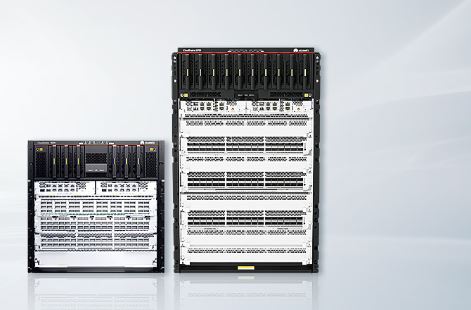In today’s increasingly connected world, securing network devices is more important than ever. A network switch, which serves as the central point for managing and directing traffic within a network, is one of the most critical pieces of equipment in any IT infrastructure. If compromised, a network switch can give attackers unauthorized access to sensitive data, cause network outages, or even launch attacks on other parts of the network. In this article, we will discuss how to secure your network switch from unauthorized access.

Tips to Secure Network Switches from Unauthorized Access
Huawei switches such as CloudEngine S16700 Series Switches are ideal for building future-proof campus networks with simplified management, high reliability, and robust security features. These features make them an excellent choice for businesses looking to establish a secure, scalable, and efficient network. With the right configuration and security practices, you can ensure that your network remains safe from unauthorized access. Here are tips to secure network switches from unauthorized access:
Change Default Credentials
One of the first steps in securing your network switch is to change the default login credentials. Many switches come with default usernames and passwords that are widely known or easy to guess. These credentials are often available in product manuals or on vendor websites, making them an easy target for attackers.
Enable Strong Authentication Protocols
Another critical aspect of securing your network switch is enabling strong authentication protocols. More than simple password-based authentication is required to protect against unauthorized access, especially when using remote access methods like SSH or SNMP. Instead, stronger authentication mechanisms such as two-factor authentication and radius or TACACS+ authentication should be implemented.
Restrict Access with VLANs and Port Security
Virtual Local Area Networks (VLANs) allow you to segment your network into smaller, isolated networks. By implementing VLANs, you can ensure that users and devices within a certain part of the network only have access to the resources they need, limiting the potential damage caused by a breach.
Port security, another important security feature, restricts the number of devices allowed to connect to each port on a switch. By enabling port security, you can ensure that only authorized devices are able to use specific switch ports, which can prevent unauthorized access to your network.
Disable Unused Ports
Many network switches have numerous ports, some of which may never be used. Leaving these unused ports enabled can be a security risk, as they can provide an entry point for an attacker. Disabling unused ports is a simple yet effective way to reduce your attack surface.
Most network switches allow you to disable unused ports through their configuration interface manually. Doing so ensures that attackers cannot exploit these ports to gain unauthorized access to your network.
Implement Access Control Lists (ACLs)
Access Control Lists (ACLs) are a powerful security feature that allows you to control traffic flow between devices in your network. By creating ACLs, you can define which users or devices can access certain resources and which types of traffic are allowed.
You can use ACLs to restrict access to the switch management interface, ensuring that only authorized IP addresses can reach the device. Additionally, ACLs can be used to block certain types of traffic, such as malicious or unauthorized protocols, from entering your network.

Use Secure Management Protocols
When managing your network switch remotely, always use secure protocols like SSH (Secure Shell) instead of older, unencrypted protocols like Telnet. SSH encrypts the data transmitted between your device and the switch, protecting sensitive information such as passwords from being intercepted by attackers.
Additionally, if your switch supports it, consider using secure versions of other management protocols, such as HTTPS for web-based management or SNMPv3 for network monitoring.
Conclusion
Securing your Network Switches is crucial in protecting your network from unauthorized access and potential attacks. Changing default credentials, enabling strong authentication, restricting access, and regularly updating your firmware can significantly reduce the risk of a security breach. Remember, network security is an ongoing process, so make sure to continuously monitor and audit your devices to stay ahead of potential threats.






Leave a Reply